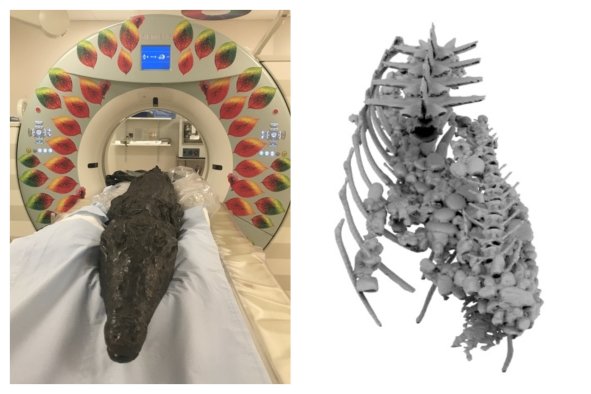Archaeologists have uncovered a pair of "sensational" ornately carved marble artifacts depicting cherubs that are thought to date to the 15th century.
The marble pieces were found in Visegrád, a castle town in Hungary. The settlement—located north of the country's capital, Budapest, on the right bank of the Danube River—is known for its medieval citadel and royal palace ruins.
The cherubs were discovered during investigations into the remains of a centuries-old church belonging to a Franciscan monastery uncovered below a tennis court near the royal palace, the Visegrád Renaissance development program said on its Facebook page.
Experts believe that the decorative carvings formed part of a marble altar. According to Visegrád Renaissance, this altar may have been the work of Benedetto da Maiano (1442–1497), a notable Early Renaissance master sculptor who was born in a now-defunct state known as the Republic of Florence located in modern-day Italy.
"At the turn of the century, [the altar] could have been made [via] a royal order from Italy to Visegrád," the Facebook post said.
The "sensational findings" were presented by archaeologist Gergely Buzás, director of the Museum of Matthias Rex in Visegrád, who highlighted the significance of the cherub sculptures saying that no Italian Renaissance art of similar artistic value and preserved in such good condition had ever been discovered in Hungary previously.
The Visegrád Renaissance development program, which began in 2021, is in the process of renovating the castle complex and the royal palace.
The Franciscan monastery where the cherub artifacts were uncovered was founded by King Sigismund in A.D. 1425. Sigismund was king of Hungary starting in 1387 but also became the monarch of several other European kingdoms and was crowned Holy Roman Emperor in 1433.
The Holy Roman Empire was a political entity spanning the western, central and southern parts of Europe that lasted for around 1,000 years, from the tail end of the first millennium until its dissolution in 1806. Rather than being a single unitary state, the empire was a confederation of numerous small and medium political entities.
This empire became one of the most powerful states in the world during the 15th and 16th centuries. At its greatest extent, it covered most of southeastern Europe as well as parts of North Africa and the Middle East, including the territory where Israel is now located.
Sigismund founded the monastery at Visegrád, and the Church of the Virgin Mary was built on the site sometime after that.
Do you have a tip on a science story that Newsweek should be covering? Do you have a question about archaeology? Let us know via science@newsweek.com.
Disclaimer: The copyright of this article belongs to the original author. Reposting this article is solely for the purpose of information dissemination and does not constitute any investment advice. If there is any infringement, please contact us immediately. We will make corrections or deletions as necessary. Thank you.



